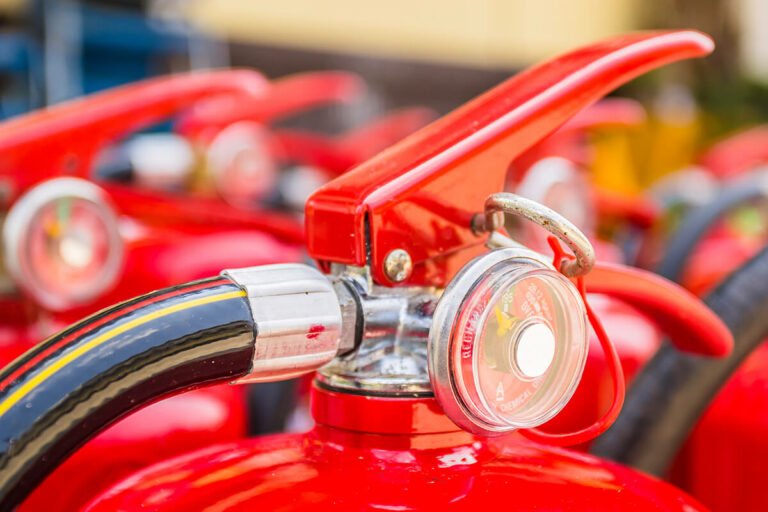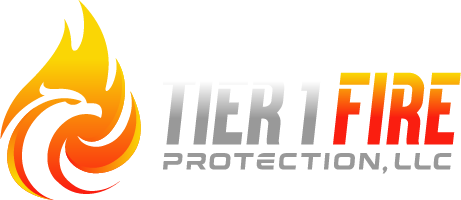Fire Extinguisher Testing & Recharging in the Greater Memphis Area
Fire extinguishers are required to be inspected annually by a certified inspector. A monthly inspection is required as well but is not required to be inspected by a certified inspector. Tier 1 Fire will be happy to come out and do your monthly inspections. The type of extinguisher will determine when maintenance is required. Our team of expert technicians are familiar with the NFPA 10 code requirements for each type of extinguisher and will ensure you are placed on the appropriate maintenance schedule.
When a fire extinguisher handle is depressed, even for a moment, an inspection is required. Tier 1 Fire will complete the inspection, as well as recharge the extinguisher if needed.
Here are some frequently asked questions about fire extinguisher inspections and recharging:
What Does a Fire Extinguisher Inspection Involve?
A fire extinguisher inspection refers to conducting a check-up on your fire extinguisher to determine its condition, availability, and accessibility in the event of an emergency.
What Are the Inspection Requirements for Fire Extinguishers?
The following are the requirements you should meet for a successful inspection procedure:
- Ensure that the fire extinguisher is easily visible or there is signage in place that indicates its exact location.
- Ensure that the fire extinguisher is easily accessible.
- Ensure that the pressure gauge is in an operable range.
- Weigh or lift the fire extinguisher to ensure that it is full.
- In the case of a wheeled fire extinguisher, ensure that the tires, hose, carriage, nozzle, and wheels are in great condition.
How Often Should Fire Extinguishers Be Inspected and Recharged?
NFPA recommends that all fire extinguishers should be inspected after installation and once a month after that. However, you should ensure that you inspect your fire extinguishers more regularly if they’re placed in locations where they could accumulate rust easily.
You should also ensure that you recharge your fire extinguisher after every use or if an issue comes up after an inspection.
How Do You Inspect and Maintain a Fire Extinguisher?
An inspection will mainly involve cleaning the fire extinguisher of any dust or rust, charging it, getting rid of any obstructions that might be interfering with its visibility, and ensuring that its serial number is readable.
Once the inspection is done, ensure that you note down all the observations made and the action plan. Afterward, you can now sign off the inspection tag with your name and date of inspection.
On the other hand, maintenance mainly involves examining your fire extinguisher both internally and externally by checking the gas cartridges, extinguishing agents, repairing, and replacing any damaged or faulty parts.
Who Is Responsible for Fire Extinguishers?
Every employer or business owner is responsible for fire extinguishers used at the workplace and ensuring the fire safety of everyone in the building.
Fire extinguishers are your most reliable line of defense in case of a fire in your home or workplace. For this reason, it’s very important to ensure that they’re properly inspected and maintained to be in their best working condition possible. Contact Tier 1 Fire Protection for all your fire extinguisher inspection and recharging needs.

